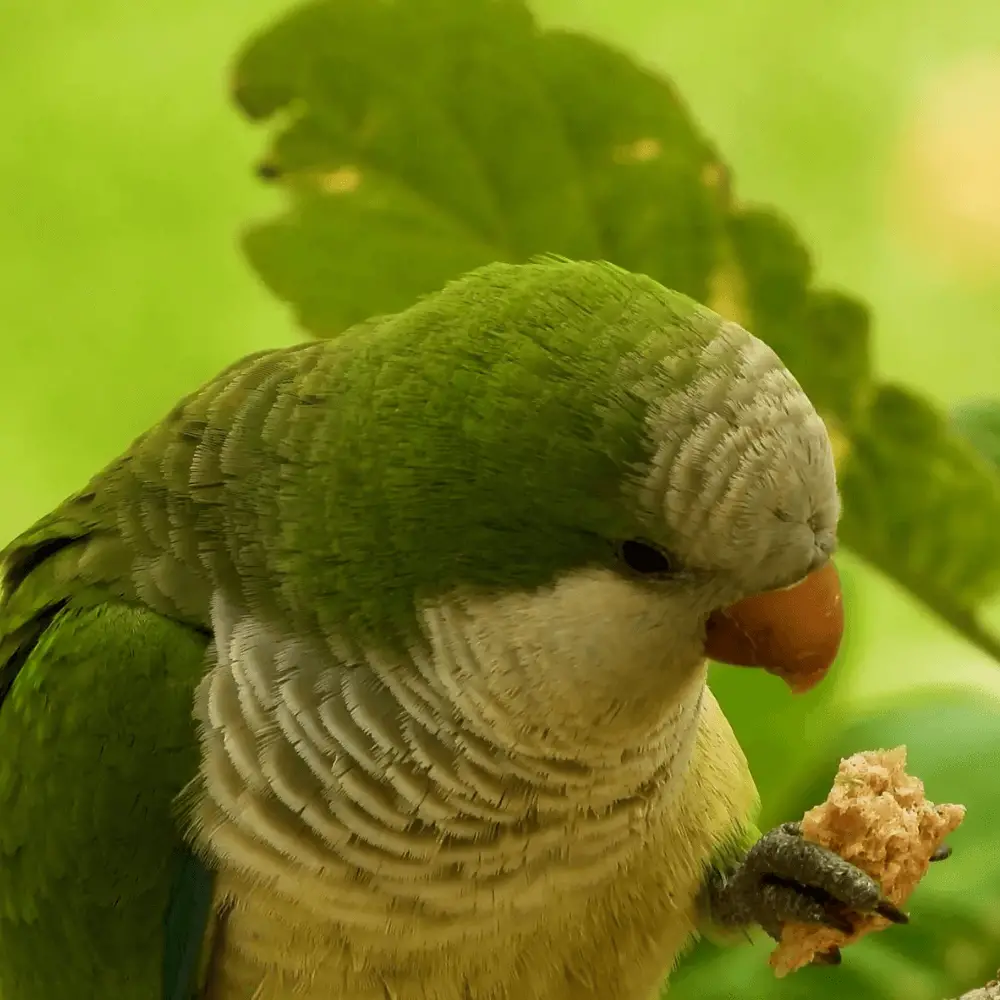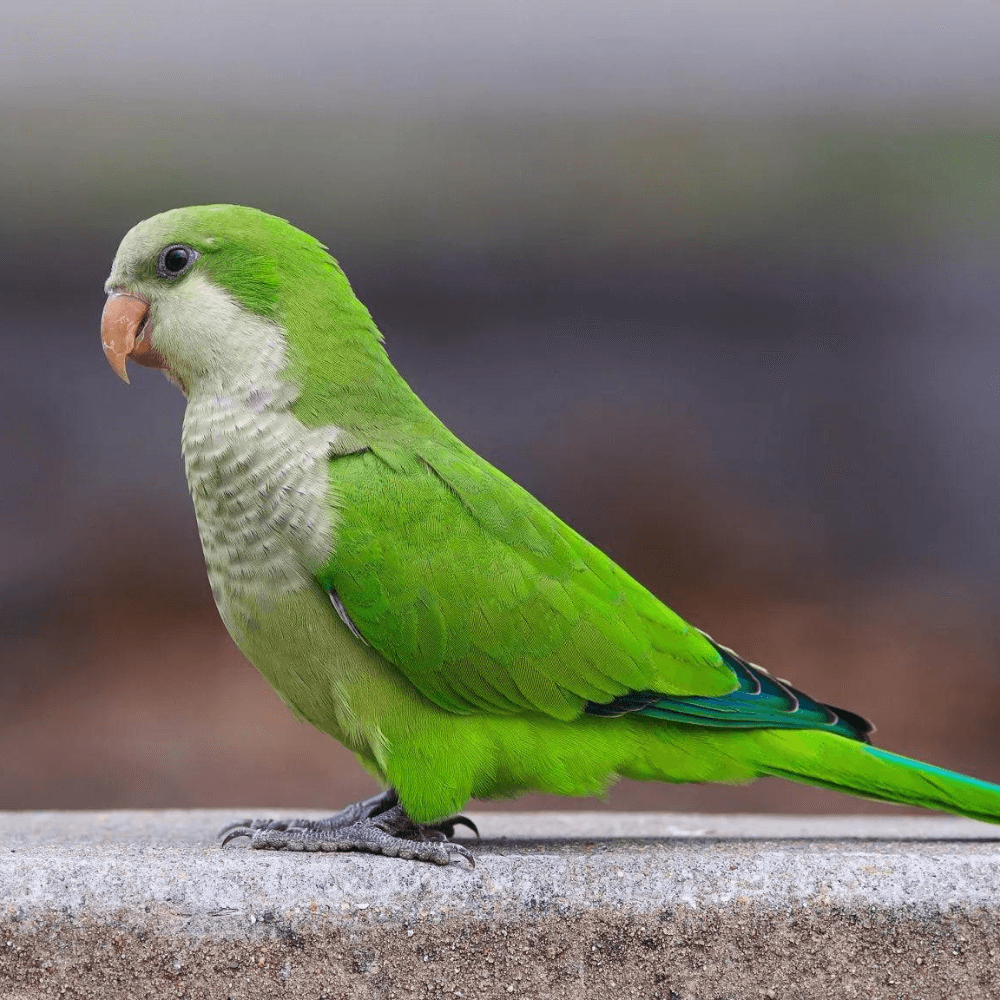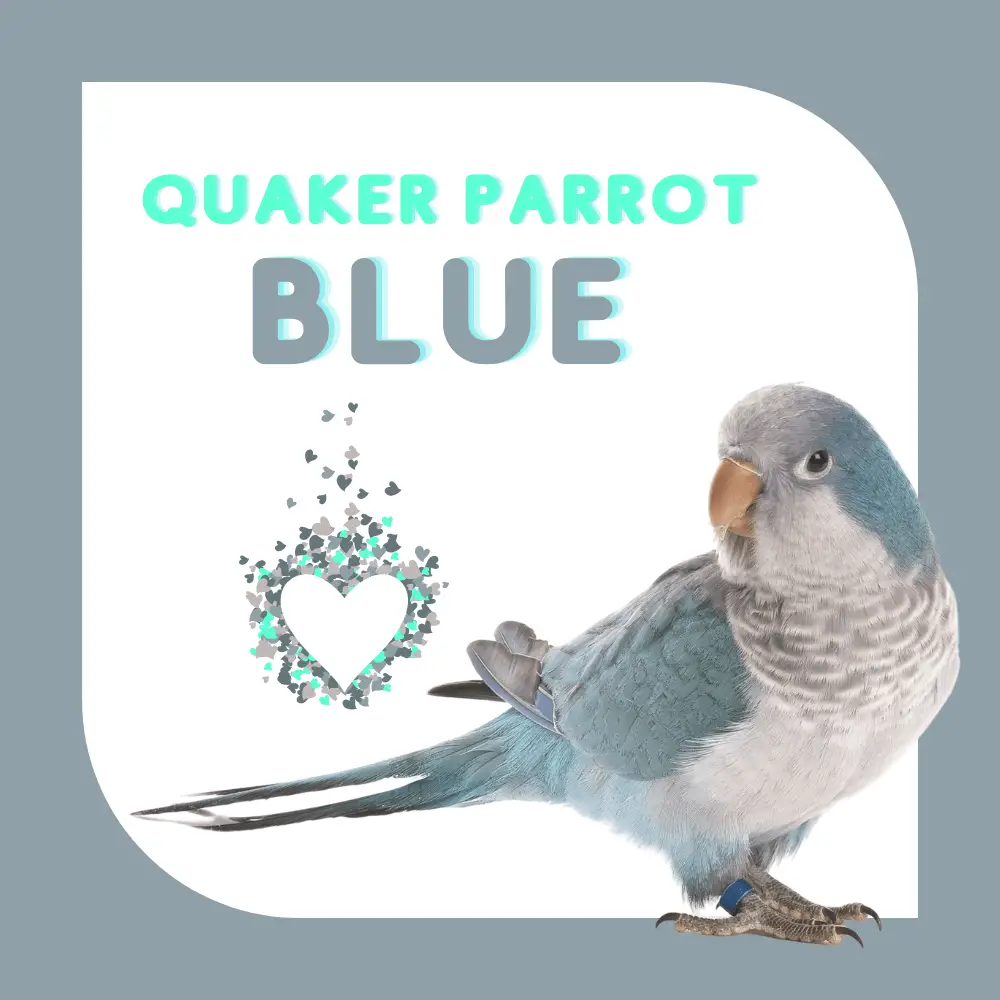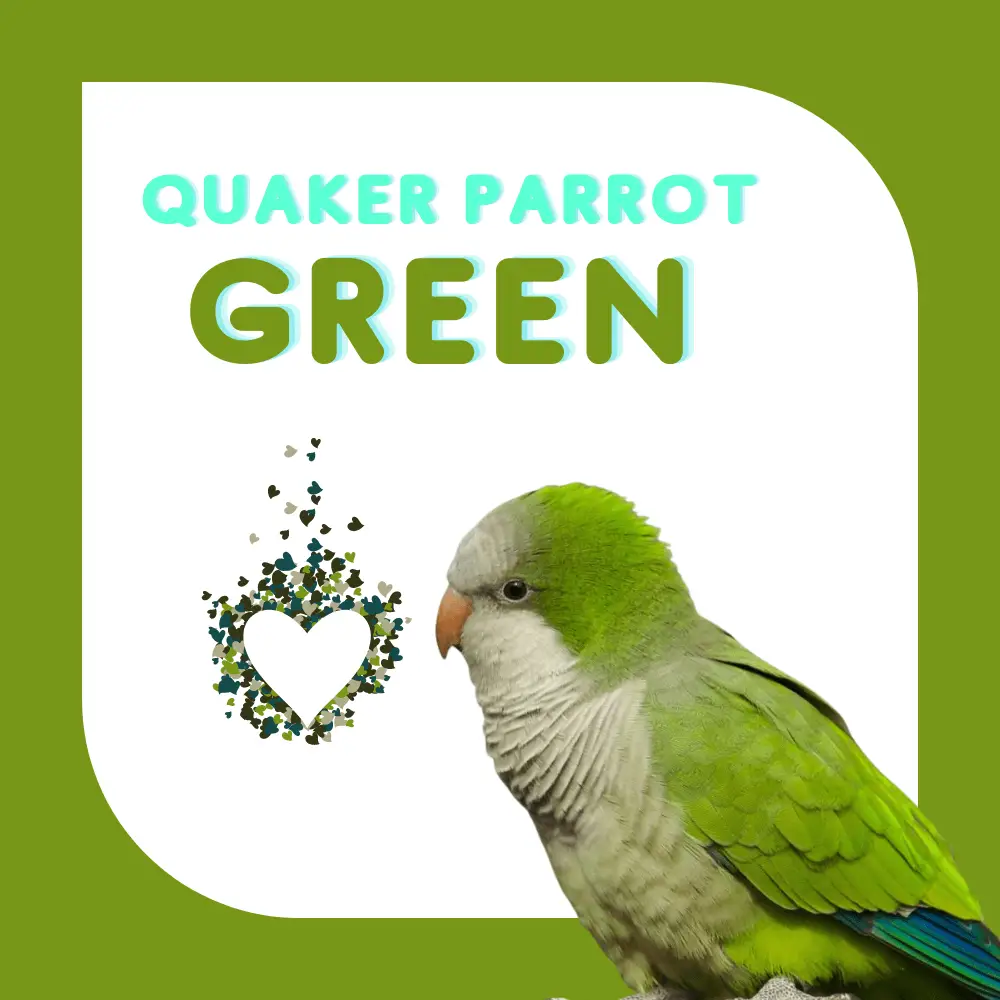The quaker parrot or monk parakeet is a light green parrot except for the head, throat, and chest which are mouse gray hence its nickname.
We note the presence of blue on part of the wings, the beak is meaty and the legs are dark. There are also different color mutations.
- Size: 29cm
- Lifespan: 30 years
Monk parakeet habitat
This species is remarkable in that it is the only parakeet to build vast collective nests with multiple entrances, made of branches and twigs, which can reach a wingspan of several meters.
The monk parakeet is native to Brazil, Paraguay, and Argentina. We find colonies, generally from wild releases, settled in certain regions of Europe (especially in Spain (easily observable in Montjuic park in Barcelona)
and in Belgium and in the south of France, especially in Montpellier – Aube’s district – and Marseilles where we have seen them for several years in the tree-lined districts); also in the Paris region near Orly airport (Wissous, L’Haÿ-Les-Roses) from the 1990s.
Quaker parrot food

The mixture of small and medium-sized seeds, fruits, flowers, small insects, and also some buds of fruit trees.
At least 50% of a Quaker parrot’s diet typically includes a pellet-based mix. The rest is supplemented with a variety of seeds and fresh, unseasoned fruits and vegetables. In nature, birds usually eat plant buds, fruits, and berries.
Premium pellet mixes tailored to the dietary needs of Quaker parrots are usually combined with a lesser amount of low-fat seeds.
Sunflower and pumpkin seeds should be served sparingly as treats only, as they are high in fat.
Common fruits and vegetables to feed Quaker parrots include apples, broccoli, carrots, celery, corn, green beans, lettuce, oranges, pears, and peas.
Foods to avoid include avocados, chocolate, fatty and salty foods, and fruits and vegetables not eaten within 24 hours.
Quaker parrot behavior

In the wild, the Monk Parakeet lives in colonies, preferring places planted with trees, particularly acacias and eucalyptus.
She is resourceful, resists winter temperatures, and destroys crops, hence her reputation as a plague.
It is so robust that, until November 1996, a dozen states in the United States banned its sale or even possession!
It is a resistant, cheerful, sociable parakeet, which raises its offspring wonderfully and without any difficulty, easy to domesticate, it is the ideal bird for any beginner or for a family which wishes a quaker parrot for adoption.
Quaker parrot talking
SOURCE: African Grey Parrot Pet
Quaker parrot lifespan
Quakers can become real clowns and their intelligence is surprising. They can unfortunately develop behavior problems especially if they are bored.
Screaming and plucking feathers (pecking) is often a lot of unhappy birds. They need an annual veterinary examination and also to consult quickly if they are sick.
As they can live between 20 and 40 years, this is a very long-term commitment, think about it.
Quaker parrot mutations
The normal colors of an adult Quaker are bright green on the head, wings, and back, with a hint of whitish-gray on the face and chest.
They have gorgeous blue flight feathers and a lighter green tint on the undersides of their tails.
Captive breeding programs have also produced a variety of beautiful color mutations in Quakers.
There is a blue hybrid Quaker parrot that was developed a few years ago. but the typical color you usually see is green.
Quaker parrot blue

Quaker parrot green

The cremino mutation among the Quakers

Quaker parrot cage
Quaker parrot breeding

Easy reproduction as well in couples as in colony in the last case; use large aviaries. Breeding usually begins around April but is likely to breed throughout the year.
Once the laying is underway, stop the massive supply of twigs otherwise our parakeet would continue to bring useless twigs to its nest and suffocate the young.
Laying of 4 to 6 eggs, incubation lasts 23 to 25 days the young leave the nest around 8 weeks to wait for the complete weaning of the latter before separating them from the parents.
It is not uncommon to see several broods in the year, so it is best to remove the nests so as not to exhaust the female which could kill her.
Quaker parrot DNA test
DNA testing, which requires a blood test or plucking, is an easy way to tell if a Quaker parrot is male or female.
A veterinarian can take a small sample of blood from the bird’s leg and send it to a lab for testing.
Other tests performed on the same sample can detect diseases and malnutrition. Alternatively, you can pluck a few feathers and send them to a DNA lab for testing, eliminating the trip to the vet. Plucking can cause irritation to your parrot and can eventually lead to infection.
Quaker parrots, also known as monk parrots, are small and sturdy parrots native to South America. They are popular as pets in part because they are able to learn many words and phrases.
Visually, male and female Quaker parrots appear to be identical; Unless you are purchasing a parrot with papers that state the bird’s sex, you will need to use the services of a veterinarian or DNA testing lab to determine your parrot’s sex.
Quakers, men, and women have the ability to speak and learn. In the wild, male Quaker’s butt heads in dances when trying to attract mates.
However, among Quaker parrots kept as pets, both males and females will sometimes butt heads for the attention of their owners.
When Quakers are kept in pairs, the female often becomes more aggressive, so this may be a clue to gender, but not a definitive factor.

